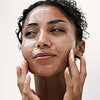Dead Sea Salt vs Epsom Salt: Which One is Better for Skin & Wellness?

🌊 Introduction
Salt baths have become a go-to wellness ritual, promising everything from muscle relief to glowing skin. But not all salts are created equal. Two of the most popular — Dead Sea Salt and Epsom Salt — may look similar, but they have very different mineral profiles and benefits.
In this blog, we’ll compare these two salts in terms of composition, benefits, and how they impact your skin health, relaxation, and body care.
⚖️ 1. Origin and Composition
-
Dead Sea Salt
Harvested from the Dead Sea, it contains a rich blend of magnesium, potassium, calcium, bromide, and over 20 trace minerals. -
Epsom Salt (Magnesium Sulfate)
A chemically pure compound of magnesium and sulfate, often manufactured synthetically.
Key Difference:
Dead Sea Salt offers a broad-spectrum mineral infusion; Epsom Salt focuses on magnesium alone.
🧖♀️ 2. Skin Benefits
-
Dead Sea Salt:
-
Hydrates and strengthens skin barrier
-
Treats eczema, psoriasis, and acne
-
Reduces inflammation and redness
-
Improves skin texture and elasticity
-
Epsom Salt:
-
Relieves sore muscles
-
May help reduce swelling
-
Lacks hydration or skin-enhancing properties
🌿 3. Therapeutic Effects
Dead Sea Salt’s mineral blend enhances circulation, detoxification, and skin regeneration, whereas Epsom Salt is primarily known for temporary muscle relief.
🧴 4. Skincare Uses
-
Dead Sea Salt: Used in scrubs, facial cleansers, healing balms, and masks.
-
Epsom Salt: Limited use in foot soaks and DIY home remedies.
✅ Conclusion
If you’re looking for comprehensive skin and wellness benefits, Dead Sea Salt wins by far. From improving chronic skin conditions to delivering spa-like relaxation, it’s the gold standard for natural skin therapy.




















